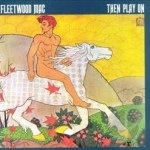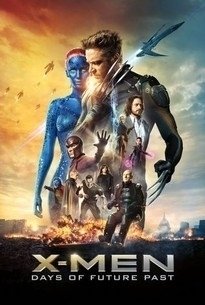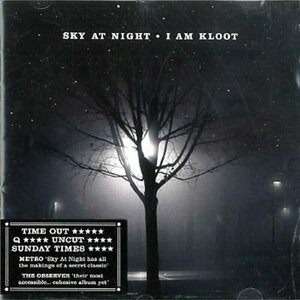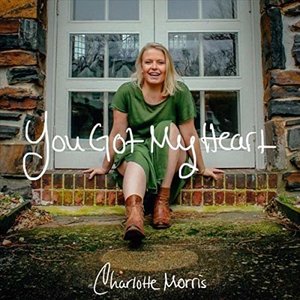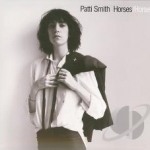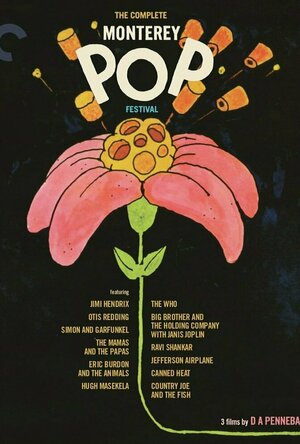Search
Search results
Daniel Rossen recommended track Before the Beginning by Fleetwood Mac in Then Play On by Fleetwood Mac in Music (curated)
Movie Metropolis (309 KP) rated X-Men: Days of Future Past (2014) in Movies
Jun 10, 2019 (Updated Jun 10, 2019)
More DC than Marvel
Bryan Singer’s return to the X-Men franchise comes at the perfect time both for the series and its director.
After last year’s poorly executed Jack the Giant Slayer, Singer needed to come back to home turf and after a string of irritating X-Men films, including the entertaining but soulless X-Men: The Last Stand and the downright offensive Wolverine origins story, it seems the superhero series needed to do the same.
But can a re-partnering 11 years after the brilliant X2 restore the magic of one of Marvel’s best comics?
Partially is the answer here. Singer restores the cinematic flair and sparkle of the series and brings back a lot of old faces but forgets a lot of the fun in the process.
x-men-days-of-future-past-character-poster-01.jpgDays of Future Past is set in a dystopian future as a war between mutants and humans continues to rage. Charles Xavier (Patrick Stewart), Magneto (Ian McKellen), Storm (Halle Berry) and many other fan favourites return to the series after being absent for some time. We follow these characters as they try to escape the sentinels; an army of robots impressively rendered in CGI designed to kill any mutant on sight, friend or foe.
The only way to stop the war is to send a mutant back to 1973 when the sentinel program was put in motion. Unfortunately, Hugh Jackman’s Wolverine is the chosen one and remains the lead character throughout the film.
Back in 1973, the mutants from X-Men First Class are blissfully unaware of what lies in store for them, though they still have their own personal battles to deal with.
As the film progresses, it becomes painfully obvious that this is very much a “First Class” era film. James McAvoy’s impressive take on the young Charles Xavier returns, as does Michael Fassbender’s Magneto.
However, only Jennifer Lawrence’s Mystique makes a lasting impact amongst the 1973 era mutants. You can see the pain and torment etched onto her face throughout theJennifer-Lawrence-mystique film and as in The Hunger Games she steals focus from everyone around her. Game of Thrones’ Peter Dinklage also joins the cast as the film’s primary antagonist Bolivar Trask and is a real joy to watch. His character is understated in every way, but he remains an iconic presence throughout.
However, as impressive as the set pieces and acting performances are, it is in the future where we wish to see more. The ‘classic’ characters are barely given any screen time which is a real shame and the real mutant cost of the war is glossed over entirely. The special effects are genuinely very good. Each of the action sequences is well choreographed and the CGI is great, especially the rendering on the future sentinels which can adapt to seek a mutant’s power – no matter what it is.
Unfortunately, the fun factor is completely lost as Singer ramps up the tension and the death toll. In fact, only one character provides the humour and that is Evan Peters’ portrayal of Quicksilver who is only on screen for 15 minutes.
Overall, X-Men: Days of Future Past is definitely the best film of the series and thankfully does away with the atrocities that have been committed previously in the franchise. However, it feels like Singer was trying so hard to repair his predecessor’s mistakes, he forgot some of the key elements of a Marvel superhero film in the process – this is more DC than Marvel.
https://moviemetropolis.net/2014/06/01/x-men-days-of-future-past-review/
After last year’s poorly executed Jack the Giant Slayer, Singer needed to come back to home turf and after a string of irritating X-Men films, including the entertaining but soulless X-Men: The Last Stand and the downright offensive Wolverine origins story, it seems the superhero series needed to do the same.
But can a re-partnering 11 years after the brilliant X2 restore the magic of one of Marvel’s best comics?
Partially is the answer here. Singer restores the cinematic flair and sparkle of the series and brings back a lot of old faces but forgets a lot of the fun in the process.
x-men-days-of-future-past-character-poster-01.jpgDays of Future Past is set in a dystopian future as a war between mutants and humans continues to rage. Charles Xavier (Patrick Stewart), Magneto (Ian McKellen), Storm (Halle Berry) and many other fan favourites return to the series after being absent for some time. We follow these characters as they try to escape the sentinels; an army of robots impressively rendered in CGI designed to kill any mutant on sight, friend or foe.
The only way to stop the war is to send a mutant back to 1973 when the sentinel program was put in motion. Unfortunately, Hugh Jackman’s Wolverine is the chosen one and remains the lead character throughout the film.
Back in 1973, the mutants from X-Men First Class are blissfully unaware of what lies in store for them, though they still have their own personal battles to deal with.
As the film progresses, it becomes painfully obvious that this is very much a “First Class” era film. James McAvoy’s impressive take on the young Charles Xavier returns, as does Michael Fassbender’s Magneto.
However, only Jennifer Lawrence’s Mystique makes a lasting impact amongst the 1973 era mutants. You can see the pain and torment etched onto her face throughout theJennifer-Lawrence-mystique film and as in The Hunger Games she steals focus from everyone around her. Game of Thrones’ Peter Dinklage also joins the cast as the film’s primary antagonist Bolivar Trask and is a real joy to watch. His character is understated in every way, but he remains an iconic presence throughout.
However, as impressive as the set pieces and acting performances are, it is in the future where we wish to see more. The ‘classic’ characters are barely given any screen time which is a real shame and the real mutant cost of the war is glossed over entirely. The special effects are genuinely very good. Each of the action sequences is well choreographed and the CGI is great, especially the rendering on the future sentinels which can adapt to seek a mutant’s power – no matter what it is.
Unfortunately, the fun factor is completely lost as Singer ramps up the tension and the death toll. In fact, only one character provides the humour and that is Evan Peters’ portrayal of Quicksilver who is only on screen for 15 minutes.
Overall, X-Men: Days of Future Past is definitely the best film of the series and thankfully does away with the atrocities that have been committed previously in the franchise. However, it feels like Singer was trying so hard to repair his predecessor’s mistakes, he forgot some of the key elements of a Marvel superhero film in the process – this is more DC than Marvel.
https://moviemetropolis.net/2014/06/01/x-men-days-of-future-past-review/
Guy Garvey recommended Sky At Night by I Am Kloot in Music (curated)
Bong Mines Entertainment (15 KP) rated You Got My Heart - Single by Charlotte Morris in Music
Jun 18, 2019
Charlotte Morris is a singer-songwriter based in New York. Not too long ago, she released a lovely sunshine-pop tune, entitled, “You Got My Heart”.
“I don’t always know what I wanna say when I look at you. And every time I think that I’ve made up my mind, you do something new. When I spend the whole day wondering if you’re ever gonna call, you never do. But as soon as I decide that I’m walking away, then I hear from you.” – lyrics
‘You Got My Heart’ tells an interesting tale of a young woman who is head-over-heels in love with a guy who she shares a long-distance relationship with.
But she wants to know if her beau loves her the same way how she loves him. Also, the answer to that question kinda bothers her deep down to her soul.
Later, she admits that she doesn’t know if their relationship will last because she doesn’t know if she really has him as a committed partner.
‘You Got My Heart’ contains a relatable storyline, pleasing vocals, and guitar-driven instrumentation flavored with sentimental elements.
“‘You Got My Heart’ is a sunshine-pop take on the struggles of long-distance relationships. This isn’t your typical summer song about falling in love, but it has the upbeat, bop-along groove while expressing something that can be difficult to face. Instead of wallowing in a sad ballad, this became my pump up jam as I figured out where to go next. ‘You Got My Heart’ is a great song for summer, windows-down road trips, and anyone looking to find the silver lining in a less-than-ideal situation.” – Charlotte Morris
Charlotte Morris draws inspiration from many of her favorite artists including Delta Rae, Brandi Carlile, Christina Perri, and folk legends like Peter, Paul and Mary, and Simon & Garfunkel.
Her songs, which are mostly auto-biographical, also reflect her years in the theatre. Also, when she’s not writing and releasing music, Charlotte can be seen performing in theatrical productions across the country, playing with dogs, and eating cheese.
https://www.bongminesentertainment.com/charlotte-morris-you-got-my-heart/
“I don’t always know what I wanna say when I look at you. And every time I think that I’ve made up my mind, you do something new. When I spend the whole day wondering if you’re ever gonna call, you never do. But as soon as I decide that I’m walking away, then I hear from you.” – lyrics
‘You Got My Heart’ tells an interesting tale of a young woman who is head-over-heels in love with a guy who she shares a long-distance relationship with.
But she wants to know if her beau loves her the same way how she loves him. Also, the answer to that question kinda bothers her deep down to her soul.
Later, she admits that she doesn’t know if their relationship will last because she doesn’t know if she really has him as a committed partner.
‘You Got My Heart’ contains a relatable storyline, pleasing vocals, and guitar-driven instrumentation flavored with sentimental elements.
“‘You Got My Heart’ is a sunshine-pop take on the struggles of long-distance relationships. This isn’t your typical summer song about falling in love, but it has the upbeat, bop-along groove while expressing something that can be difficult to face. Instead of wallowing in a sad ballad, this became my pump up jam as I figured out where to go next. ‘You Got My Heart’ is a great song for summer, windows-down road trips, and anyone looking to find the silver lining in a less-than-ideal situation.” – Charlotte Morris
Charlotte Morris draws inspiration from many of her favorite artists including Delta Rae, Brandi Carlile, Christina Perri, and folk legends like Peter, Paul and Mary, and Simon & Garfunkel.
Her songs, which are mostly auto-biographical, also reflect her years in the theatre. Also, when she’s not writing and releasing music, Charlotte can be seen performing in theatrical productions across the country, playing with dogs, and eating cheese.
https://www.bongminesentertainment.com/charlotte-morris-you-got-my-heart/
